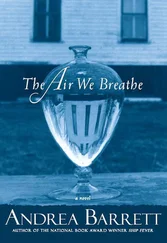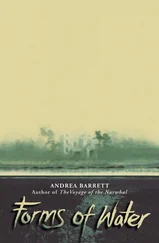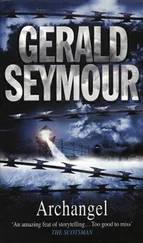In class, Axel brought new terms and concepts alive with his arms, slicing the air like a conductor, his thick hair sticking up in spikes. They were after more than just the study of vague factors or mysterious unit characters, he said: the gene was not simply an abstract idea; genes were material! Heredity depended on chromosomes, forever splitting and recombining; units of heredity — genes — must be arranged like beads on a string, particles invisible to the eye but visible through their actions, ordered along visible chromosomes. Let the older generation argue about immaterial factors, vitalistic forces, the possibilities of organisms passing on changes caused by will or experience. The truth, Axel emphasized during Sam’s first semester, was that the particles of heredity passed from one generation to the next and could not be influenced by what happened to the body. Every living individual had two parts, one patent, visible to our eyes — the me you see, the tree you touch; that was the somatoplasm — and the other latent, perceptible only by its effect on subsequent generations but continuing forever, part of an immortal stream; that was the germplasm. Phenotype, genotype (Sam loved repeating those words). Concepts made visible, Axel said happily, through our own flies.
So Sam couldn’t swim; so he hated his history class. When he listened to Axel talk about his work, now their work, he was entirely alive. If they helped elucidate the way genes were arranged and transmitted, then they’d begin to understand heredity and variation. If they understood that, they’d begin to glimpse the workings of evolution. And if they could understand evolution, then …
“You have a pedigree,” Axel said one day when Sam was mashing bananas, sprinkling yeast, and measuring agar: by then he was the food maker as well as the bottle washer. “Just like our flies. You were trained by Charlie Spacek, and now you’re working with me. We were trained by Thomas Morgan, who was trained by William Brooks. Brooks was trained by Agassiz himself, at the summer school for the study of natural history he founded on Penikese Island: the ancestor of the Woods Hole labs. One short line: Agassiz, Brooks, Morgan, me, and then you. You’re connected to the new biology just as directly as the flies we’re breeding in here are connected to the original stocks from Morgan’s lab.”
Sam didn’t share that with Avery, who was as interested in physics as Sam was in biology, but who hadn’t yet found the right professor; it would have felt like bragging. But he did love the feel of his own hands linking Mr. Spacek’s Drosophila , whose ancestors had also come from the fly room at Columbia, to the new generations hatching in the bottles he prepared. Forget the litter, the browning bananas, the morgue filled with bodies drowned in oil. The flies swooned docilely at a whiff of ether, moved easily with a touch from a camel’s hair brush, and then — the variations were marvelous. Eye after eye after eye, all red — and then here were white eyes, and there were pink. Wings all shaped like wings, until one fly produced a truncated set and another a pair curled like eyelashes, each mating yielding surprises, a new generation every ten days: how could anyone think of this as work? Work was waiting for frogs to hatch and pass through their stages until they matured enough to mate. Planting corn and waiting for the seeds to germinate, the stalk to grow, the ear to fill and ripen before one could even begin to guess— that was work; he couldn’t believe the researchers a few hours away at Cornell had the patience. For him it was always, only, flies. In a clean bottle, a courting male held out one wing to his virgin bride and danced right and then left before embracing her: who wouldn’t love that ? Let others fuss with peas and four-o’clocks, rabbits and guinea pigs: for Sam, the flies were the key to everything.
That first Christmas vacation, he returned to school early at Axel’s request. As the train rumbled north, he looked up from his stack of journals now and then and noticed the Catskills thick with snow, or a crow flying low above the frozen Hudson, but mostly he kept his eyes on his work. The brindled dog at the train station had to bark twice before Sam stopped to pat him, walking on not to his room — the dorms were still closed — but to a small brick house two blocks from campus, where Axel, unmarried then, lived in happy squalor. Clothes on the floor, sheets on the couch (he always had visitors); Sam was welcome to stay, he said, the ten days until the semester started. A minute after Sam dropped his bag, they headed for the lab, which was warm and stuffy despite the bitter cold outside, electric bulbs glowing inside the old bookcases Axel had turned into incubators. Sam found a path through the tumble of plates and coffee cups and reprints and manuscripts, books lying open everywhere, cockroaches investigating the huge stain — molasses? — on the journal that Duncan, whom Sam then knew only as Axel’s senior student, had left at his place.
Axel, Duncan, and two other students, both juniors, worked at desks pushed into an island at the center of the room; Sam’s place was at the sink, shaking used food from soiled bottles, or at the counter, filling wooden racks with wide-mouthed homeopathic vials. From there he’d watched Duncan mating virgin females in bottles for which Sam had prepared the food, later shaking the etherized offspring onto counting plates, bending over dissecting scopes, shouting happily when he found something unexpected. In November, he’d discovered a new mutant, which Axel had sent to Columbia, and that had made Sam feel — not that he wanted to be Duncan, not even that he wanted to be Duncan’s friend (he was shallow, Sam thought even then, and prone to leap to easy conclusions), but that he wanted a chance to work on his own.
Now he plunged into the clutter, planning to take over Duncan’s chair the minute he finished cleaning up. Axel asked if he thought maintaining the stock cultures for the Genetics and Heredity course, even as he was enrolled in it, might be too much.
“I’ll be fine,” Sam said, bending to his glassware. Everything stank of overripe bananas. “It’s no problem at all. I could do more, if Duncan gets too busy …”
Axel squashed a fly on the counter and laughed. “You have to sleep sometime,” he said. “Although, personally, I think sleep is overrated. Do you want to hear what went on at the meeting?”
“Please,” Sam said. “I’ve been dying for news.”
Later — at Woods Hole, in Moscow, every place where, after long days in the lab, he’d end up drinking with fellow geneticists — Sam would try to describe what he felt as he listened to Axel summarize that extraordinary paper from the international meeting in Toronto. As if he’d sprouted extra eyes, which let him see a new dimension. Or as if his brain had added a new lobe, capable of thinking new thoughts. It is commonly said that evolution rests upon two foundations — inheritance and variation; but there is a subtle and important error here. Inheritance by itself leads to no change, and variation leads to no permanent change, unless the variations themselves are heritable. Thus it is not inheritance and variation which bring about evolution, but the inheritance of variation. Surely the name of the man who’d written that — Hermann Muller — deserved a whole separate shelf in Sam’s brain. Whenever he recited those crucial lines, others would chime in with more of Muller’s essential insights: that in the cell, beyond the obvious structures, there must also be thousands of ultramicroscopic particles influencing the entire cell, determining its structure and function. That these particles, call them genes, were in the chromosomes, and in certain definite positions, and that they could propagate themselves. Magic, they all agreed. Magic!
Читать дальше












